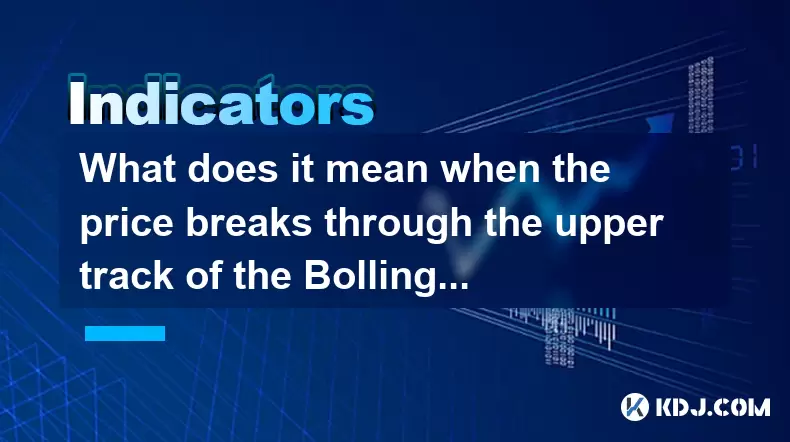-
 Bitcoin
Bitcoin $118300
-0.58% -
 Ethereum
Ethereum $3825
0.11% -
 XRP
XRP $3.137
-0.71% -
 Tether USDt
Tether USDt $0.9999
-0.01% -
 BNB
BNB $803.9
-3.37% -
 Solana
Solana $181.5
-1.94% -
 USDC
USDC $0.9999
0.01% -
 Dogecoin
Dogecoin $0.2238
-2.51% -
 TRON
TRON $0.3358
2.12% -
 Cardano
Cardano $0.7844
-2.16% -
 Hyperliquid
Hyperliquid $43.31
-1.48% -
 Sui
Sui $3.807
-4.04% -
 Stellar
Stellar $0.4203
-1.96% -
 Chainlink
Chainlink $17.79
-3.00% -
 Bitcoin Cash
Bitcoin Cash $567.8
-1.34% -
 Hedera
Hedera $0.2614
-4.30% -
 Avalanche
Avalanche $24.19
-4.46% -
 Litecoin
Litecoin $109.2
-0.74% -
 UNUS SED LEO
UNUS SED LEO $8.969
-0.01% -
 Toncoin
Toncoin $3.404
3.97% -
 Ethena USDe
Ethena USDe $1.001
-0.01% -
 Shiba Inu
Shiba Inu $0.00001307
-3.19% -
 Uniswap
Uniswap $10.33
-1.23% -
 Polkadot
Polkadot $3.884
-4.06% -
 Monero
Monero $312.9
-1.87% -
 Dai
Dai $1.000
0.01% -
 Bitget Token
Bitget Token $4.537
-2.24% -
 Pepe
Pepe $0.00001156
-3.40% -
 Cronos
Cronos $0.1437
-0.89% -
 Aave
Aave $282.8
-2.77%
What does it mean when the price breaks through the upper track of the Bollinger Band but the RSI is overbought?
A price breakout above the Bollinger Band with overbought RSI signals strong momentum but potential exhaustion—confirm with volume, trend context, and divergence before acting.
Jul 30, 2025 at 03:35 am

Understanding Bollinger Bands and Their Upper Track
Bollinger Bands are a widely used technical analysis tool developed by John Bollinger. They consist of three lines: a simple moving average (SMA), typically over 20 periods, and two outer bands that are standard deviations away from the SMA. The upper track represents the +2 standard deviation level above the SMA and acts as a dynamic resistance level. When the price moves beyond this upper band, it is considered to be trading at a relatively high level compared to recent volatility. This breakout can signal strong bullish momentum, but it does not automatically mean the trend will continue. Traders often interpret this move as a potential overextension, especially when confirmed by other indicators.
The width of the Bollinger Bands reflects market volatility. Narrow bands, known as the "squeeze," often precede significant price moves. Conversely, wide bands indicate high volatility. A break above the upper band during a squeeze may suggest the start of a powerful uptrend. However, such a breakout should never be assessed in isolation. The context of the broader trend, volume, and confirmation from other tools like the RSI are essential for accurate interpretation.
Decoding the RSI Overbought Signal
The Relative Strength Index (RSI) is a momentum oscillator that measures the speed and change of price movements on a scale from 0 to 100. An RSI value above 70 is traditionally considered overbought, indicating that the asset may be overvalued and due for a pullback or correction. While overbought conditions suggest weakening momentum, they do not guarantee an immediate reversal. In strong uptrends, RSI can remain above 70 for extended periods, reflecting sustained buying pressure.
When RSI is overbought and the price breaks the upper Bollinger Band simultaneously, it creates a conflicting signal. The breakout implies strength, while the overbought RSI hints at exhaustion. This divergence warrants caution. Traders should assess whether the overbought condition is part of a healthy trend continuation or a sign of an impending reversal. Monitoring RSI for bearish divergence—where price makes higher highs but RSI makes lower highs—can offer early warnings of momentum loss.
Interpreting the Confluence of Bollinger Band Breakout and Overbought RSI
When the price breaks above the upper Bollinger Band while the RSI is overbought, it reflects a market in a state of extreme bullish momentum but potentially nearing exhaustion. This scenario often occurs during parabolic rallies or news-driven spikes. The breakout shows that buyers are in control, pushing prices beyond recent volatility norms. However, the overbought RSI suggests that short-term momentum may be stretched.
Traders should not assume an immediate reversal. Instead, they should evaluate the strength of the trend. In a strong uptrend, such signals can mark continuation points rather than reversal zones. Key factors to consider include trading volume, candlestick patterns near the breakout, and support from moving averages. High volume on the breakout increases the likelihood of sustained movement. Conversely, low volume may indicate a false breakout.
Another consideration is the historical behavior of the asset. Some cryptocurrencies, like Bitcoin or Ethereum, can sustain overbought conditions during bull runs. Observing how the asset has reacted in similar past scenarios provides context. Backtesting this setup on historical charts can reveal whether such combinations led to pullbacks or further gains.
Practical Steps for Trading This Setup
To effectively respond to this technical scenario, traders should follow a structured approach:
- Confirm the breakout by waiting for the candle to close above the upper Bollinger Band. Intraday wicks may falsely trigger the signal.
- Check RSI value and trend alignment. If RSI is above 70 but rising with the price, the uptrend may still have legs.
- Look for bearish divergence on the RSI. If price reaches a new high but RSI fails to do so, it signals weakening momentum.
- Monitor volume during the breakout. A surge in volume supports the validity of the move.
- Set dynamic stop-loss levels just below the upper band or recent swing low to manage risk.
- Use trailing stops if the trend continues, allowing profits to run while protecting against sudden reversals.
- Avoid shorting solely based on overbought RSI. Strong trends can remain overbought for long periods.
For those considering entry, a pullback toward the middle SMA (20-period) with sustained volume could offer a safer opportunity. Alternatively, options traders might use this setup to sell call options or implement bear call spreads if they anticipate a reversion.
Common Misinterpretations and Risk Management
A frequent mistake is assuming that an overbought RSI always leads to a price drop. In trending markets, overbought can stay overbought. Similarly, a Bollinger Band breakout is not inherently bearish. The combination of both signals increases uncertainty, not certainty. Traders must avoid binary thinking—this is not a "sell now" signal but a warning to proceed with caution.
Risk management is critical. Position sizing should be reduced when facing conflicting signals. Using a risk-reward ratio of at least 1:2 ensures that potential gains outweigh the risks. Stop-loss orders should be placed based on technical levels, not arbitrary percentages. For example, placing a stop below the breakout candle’s low or beneath the 20-period SMA helps mitigate losses if the move reverses.
Additionally, monitoring higher timeframes (e.g., daily or 4-hour charts) provides context. A breakout on a 1-hour chart may be insignificant if the daily trend is sideways or bearish. Aligning signals across multiple timeframes improves decision accuracy.
Frequently Asked Questions
Can the price remain above the upper Bollinger Band when RSI is overbought?
Yes. In strong bullish trends, especially during crypto bull markets, prices can trade above the upper band for several periods while RSI stays above 70. This reflects sustained demand and does not necessarily indicate an imminent reversal.
Should I sell immediately when both conditions occur?
No. Immediate selling is not recommended without additional confirmation. Wait for bearish reversal patterns, such as shooting stars or engulfing candles, or a drop in RSI below 70 with decreasing volume.
Does this setup work the same across all cryptocurrencies?
Not exactly. High-cap, liquid assets like Bitcoin may sustain overbought conditions longer than low-cap altcoins, which are more prone to sharp reversals. Always consider the asset’s volatility and trading volume.
How can I use Bollinger Bands and RSI together more effectively?
Combine them with trendlines, volume analysis, and support/resistance levels. For instance, a breakout above the upper band near a key resistance level with overbought RSI increases the likelihood of a rejection. Conversely, a breakout with rising volume and no nearby resistance may continue upward.
Disclaimer:info@kdj.com
The information provided is not trading advice. kdj.com does not assume any responsibility for any investments made based on the information provided in this article. Cryptocurrencies are highly volatile and it is highly recommended that you invest with caution after thorough research!
If you believe that the content used on this website infringes your copyright, please contact us immediately (info@kdj.com) and we will delete it promptly.
- IPO, Bitcoin, and Treasury: A New Era of Crypto Investment?
- 2025-07-30 14:30:12
- Bitcoin, Binance, and Whales: Decoding the Latest Market Moves
- 2025-07-30 14:50:12
- Sinkhole Rescue: Migrant Workers' Heroism Sparks Fundraising in Tanjong Katong
- 2025-07-30 14:50:12
- Strategy, Bitcoin, and IPOs: A New York Perspective on 2025's Biggest Moves
- 2025-07-30 14:55:11
- TROLL Memecoin Mania: From Online Buzz to Market Reality
- 2025-07-30 14:55:11
- Coinbase, Circle, and the Power of Partnership: A New Era for Crypto?
- 2025-07-30 12:30:12
Related knowledge

What are the best WMA settings for day trading crypto?
Jul 30,2025 at 03:43pm
Understanding WMA in the Context of Crypto Day TradingThe Weighted Moving Average (WMA) is a technical indicator that assigns greater importance to re...

What are the advantages of using the WMA indicator for crypto?
Jul 30,2025 at 03:21pm
Understanding the WMA Indicator in Cryptocurrency TradingThe Weighted Moving Average (WMA) is a technical analysis tool widely used in cryptocurrency ...

What are the main differences between WMA, SMA, and EMA in crypto?
Jul 30,2025 at 02:50pm
Understanding the Role of Private Keys in Cryptocurrency WalletsEvery cryptocurrency wallet operates based on cryptographic principles, with the priva...

How is the WMA indicator calculated in cryptocurrency trading?
Jul 30,2025 at 02:35pm
Understanding the Weighted Moving Average (WMA) in Cryptocurrency TradingThe Weighted Moving Average (WMA) is a technical analysis tool widely used in...

What is the relationship between EMA and price momentum?
Jul 30,2025 at 04:07pm
Understanding EMA in Cryptocurrency TradingThe Exponential Moving Average (EMA) is a widely used technical indicator in the cryptocurrency trading com...

How does news and market sentiment affect EMA signals in crypto?
Jul 30,2025 at 03:00pm
Understanding EMA and Its Role in Crypto TradingThe Exponential Moving Average (EMA) is a widely used technical indicator in cryptocurrency trading th...

What are the best WMA settings for day trading crypto?
Jul 30,2025 at 03:43pm
Understanding WMA in the Context of Crypto Day TradingThe Weighted Moving Average (WMA) is a technical indicator that assigns greater importance to re...

What are the advantages of using the WMA indicator for crypto?
Jul 30,2025 at 03:21pm
Understanding the WMA Indicator in Cryptocurrency TradingThe Weighted Moving Average (WMA) is a technical analysis tool widely used in cryptocurrency ...

What are the main differences between WMA, SMA, and EMA in crypto?
Jul 30,2025 at 02:50pm
Understanding the Role of Private Keys in Cryptocurrency WalletsEvery cryptocurrency wallet operates based on cryptographic principles, with the priva...

How is the WMA indicator calculated in cryptocurrency trading?
Jul 30,2025 at 02:35pm
Understanding the Weighted Moving Average (WMA) in Cryptocurrency TradingThe Weighted Moving Average (WMA) is a technical analysis tool widely used in...

What is the relationship between EMA and price momentum?
Jul 30,2025 at 04:07pm
Understanding EMA in Cryptocurrency TradingThe Exponential Moving Average (EMA) is a widely used technical indicator in the cryptocurrency trading com...

How does news and market sentiment affect EMA signals in crypto?
Jul 30,2025 at 03:00pm
Understanding EMA and Its Role in Crypto TradingThe Exponential Moving Average (EMA) is a widely used technical indicator in cryptocurrency trading th...
See all articles

























































































